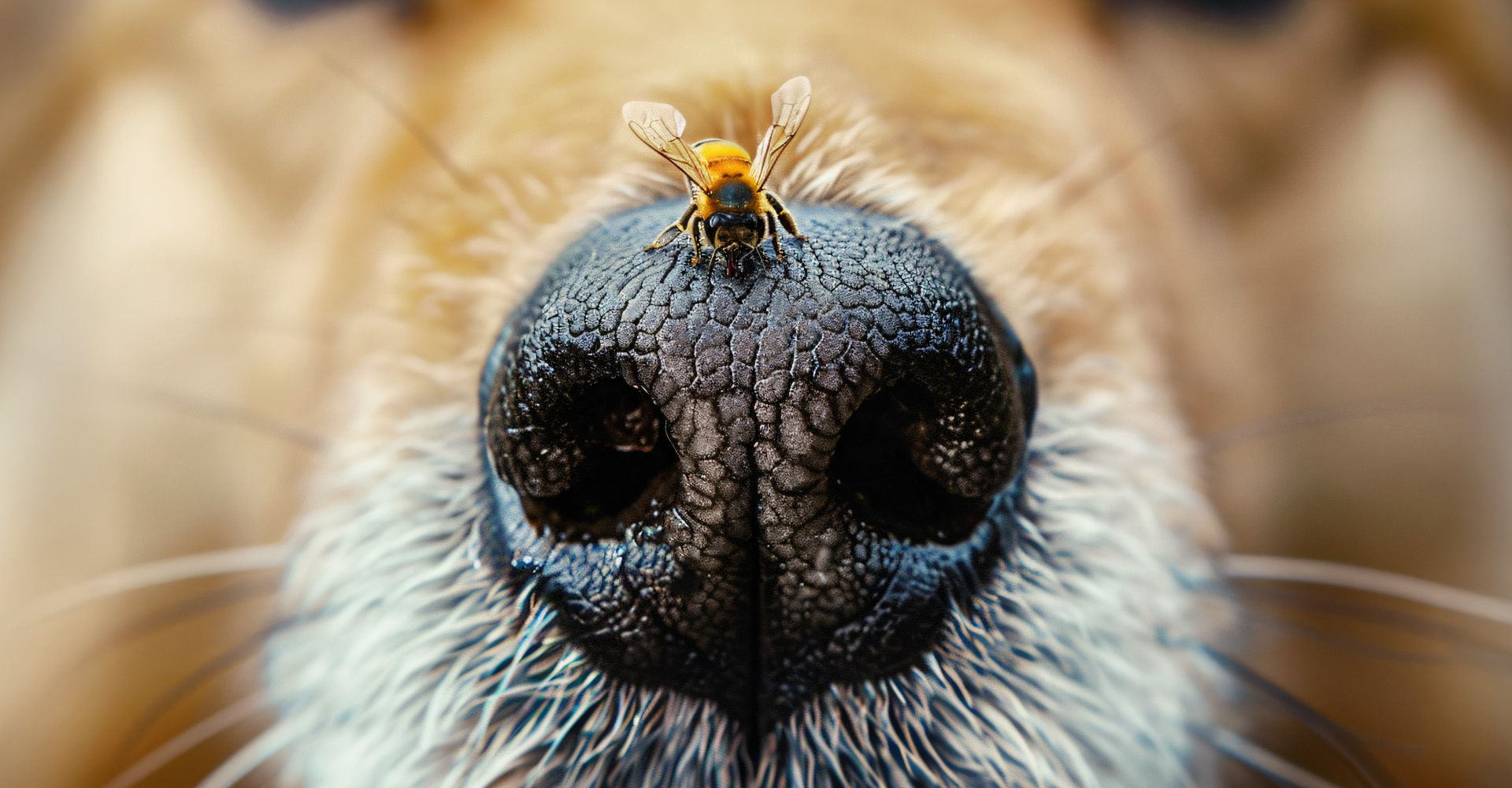Pets are naturally curious, and sometimes that curiosity leads to painful encounters with buzzing insects. Quick action, and being prepared with pet insurance, can make all the difference when dealing with stressful moments, such as your cat or dog being stung by a bee.
Expert Advice from Dr Edward Hall:
This article features insights from Dr Edward Hall, principal veterinarian at Die Poort Animal Clinic in Pretoria. With a passion for small animal medicine and wound treatment, Dr Hall brings years of hands-on experience to help pet parents handle everyday emergencies with confidence.
First Things First: Is It a Bee or Wasp Sting?
Both bees and wasps pack a punch, but the way they sting differs.
- Bees leave their stinger behind, and it can keep pumping venom if not removed quickly.
- Wasps don’t leave a stinger, but they can sting repeatedly.
Identifying the insect can help you and your vet decide on the best bee or wasp sting treatment.
What To Do if Your Dog Was Stung by a Bee
If your dog yelps suddenly and starts licking or chewing at their paw, a sting could be the culprit. Check for a stinger. If visible, gently scrape it out with a credit card rather than pinching with tweezers, which can release more venom.
But, what if your pet gets stung in the mouth? This situation is more serious. Stings inside the mouth or throat can cause swelling that interferes with breathing. If you notice swelling, drooling, or distress, head to your vet immediately.
Recognising a Bee Sting Allergy in Pets
Some pets react mildly, while others may have a bee sting allergy.
Signs to Watch For:
- Swelling of the face, muzzle, or eyes
- Hives on the skin
- Excessive drooling or pawing at the face
- Vomiting, diarrhoea, weakness, or collapse
If you see these symptoms, treat it as an emergency. Allergic reactions can progress to life-threatening anaphylaxis within minutes.
Can I Give My Dog Allergex®?
Yes, but only under veterinary guidance. The dosage depends on your dog’s size, weight, and health. Never guess. Always confirm with your vet before giving any medication.
Bee & Wasp Sting Treatments for Pets: At Home Remedy vs Vet Care
Call the vet immediately if your dog shows swelling, breathing trouble, or collapse. At home care may be appropriate for mild swelling or redness, but still confirm the correct treatment with your vet.
Treating a Bee Sting at Home
- Remove the stinger quickly if it’s a bee sting.
- Apply a cold compress for 5 to 10 minutes to reduce swelling.
- A paste of baking soda may help neutralise the venom.
If the reaction escalates, professional vet care is non-negotiable.
How to Soothe a Wasp Sting Safely
Wasp stings are alkaline. Gently applying vinegar or lemon juice may provide relief, alongside cold compresses.
Be Prepared, Not Panicked
A cat, dog, or any other pet being stung by a bee doesn’t have to be a crisis if you know the signs and steps. Stay calm, treat quickly, and get veterinary help when needed.
And remember, unexpected vet visits can sting your wallet too. That’s why dotsure.co.za is here to help. For peace of mind when life’s little surprises buzz your way, contact us or get a quote today!



